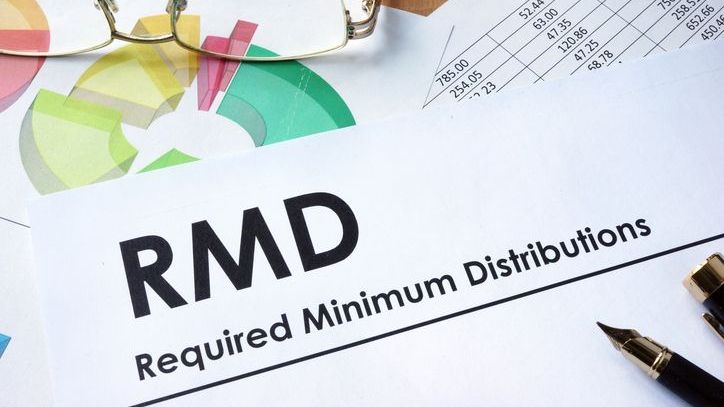Converting a 401(k) into a Roth IRA can be appealing for several reasons. Not only can you make qualified withdrawals from Roth accounts tax-free, but Roth accounts are also exempt from required minimum distributions (RMDs.) That can give you more flexibility when withdrawing from your account in retirement and potentially save you money on taxes.
If you’re thinking about a Roth conversion or need help planning for your RMDs, consider working with a financial advisor.
Imagine you’re nearing retirement age and have $1.3 million in a 401(k). Converting the whole balance in one fell swoop could leave you with a massive tax liability. On the other hand, converting your 401(k) gradually over the course of a decade can reduce taxes compared to converting it all in a single transaction.
While you could start converting $130,000 annually, you may want to change that amount later on depending mostly on how the investments in your 401(k) perform.
Impact of Roth Conversions on RMDs

RMDs withdrawals you’re required to take from tax-deferred retirement accounts starting at age 73 (the RMD age rises to 75 for anyone who turns 74 after Dec. 31, 2032). These withdrawals are treated as ordinary taxable income, so RMDs can push you into a higher tax bracket and increase your tax bill.
For example, if you have $1.3 million in your 401(k) at age 59 and earn 4% annually for the next 14 years, your 401(k) could grow to more than $2.77 million. When you start taking RMDs after turning 73, your first RMD would be over $104,000. If you are a single filer whose only other taxable retirement income is $25,000 in Social Security benefits, that would increase your marginal tax rate from 12% to 24% (using the 2024 tax brackets).
Avoiding RMDs isn’t the only reason to consider a conversion. You may also want to convert if you think you’ll be in a higher tax bracket after you retire. Also, Roth accounts can make bequeathing your wealth to your heirs easier, so a conversion can be a useful estate planning tool. But if you need help deciding whether a Roth conversion is suited for your situation and goals, connect with a financial advisor and talk about it.
Conversion Strategies
If you convert $1.3 million in one lump sum, this would put you in the highest marginal tax bracket – 37% – and require paying over $430,000 on your next tax return. Making a series of annual $130,000 conversions over the next 10 years could reduce this tax bill significantly.
Assuming for the sake of illustration that each year you have $60,000 in other taxable income after deductions and credits, your annual income over the conversion period will be $190,000. As a single filer, that will put you in the 24% bracket and require paying approximately $35,000 per year in taxes (assuming you take the standard deduction). Over the 10-year conversion period you’d hypothetically pay more than $350,000 in taxes but potentially save approximately $80,000 compared to doing a lump-sum conversion.
In some situations, you could use other conversion strategies. For instance, if you expect to have lower income one year, you could convert a larger amount. The central idea is to convert just enough of your 401(k) savings to bring your taxable income up to the next tax bracket threshold – but not past it. If you’re interested in Roth conversions or other tax planning strategies, consider working with a financial advisor.
Roth Conversion Caveats

Converting 401(k) funds into a Roth account can make financial sense, but there are some risks and limits to this move. To begin with, you have to wait five years after establishing a Roth IRA to withdraw any investment earnings from the account. Running afoul of this rule can trigger income taxes and potentially a 10% early withdrawal penalty.
There’s also a separate five-year waiting period that applies specifically to Roth conversions. The IRS requires you to wait five years from the start of the year in which you completed a conversion before you can withdraw any of the money that’s converted. However, this particular five-year rule doesn’t apply to people who are 59 ½ or older.
If you set up your Roth now at age 59 and start taking withdrawals before you are 64, you may have to pay taxes on some of the withdrawals.
Also, implementing a Roth conversion strategy calls for making forecasts about future tax rates and the return your investments will earn. Forecasting involves risk because events may turn out differently. For instance, if you expect future tax rates to be lower and they increase, as current law calls for, you might have been better off to convert more now.
You might also wish you’d converted more if your investments generate higher returns than expected. That could cause your 401(k) to have more money than you expect when you complete your conversion plan, so that you still have to take RMDs.
Finally, if there is any money left in your 401(k), do not neglect to take RMDs as mandated. If you do that, you could owe a penalty of 25% of the amount you should have withdrawn as an RMD. And remember, a financial advisor can help you plan for RMDs and their tax impact.
Bottom Line
Converting funds from a 401(k) or other tax-deferred retirement account can help you avoid RMDs and potentially reduce your tax liability. Gradually converting a portion of your 401(k) each year may make sense as a way to reduce your current tax bill. However, you may have to be flexible about the amount you convert if tax rates or your investment returns turn out differently than you planned.
RMD Planning Tips
- If you have tax-deferred retirement accounts, you’ll want to get a sense of how much your RMDs could be and plan for their tax impact. Calculating your RMDs on your own is relatively easy, but SmartAsset built an RMD calculator to make it even easier. The free tool can help you estimate how much your first RMD will be and when it’s required to be taken.
- Deciding how to move funds from a 401(k) to a Roth account calls for carefully evaluating your options. A financial advisor can help with that. Finding a financial advisor doesn’t have to be hard. SmartAsset’s free tool matches you with up to three vetted financial advisors who serve your area, and you can have a free introductory call with your advisor matches to decide which one you feel is right for you. If you’re ready to find an advisor who can help you achieve your financial goals, get started now.
Photo credit: ©iStock.com/Luke Chan, ©iStock.com/designer491, ©iStock.com/kate_sept2004
